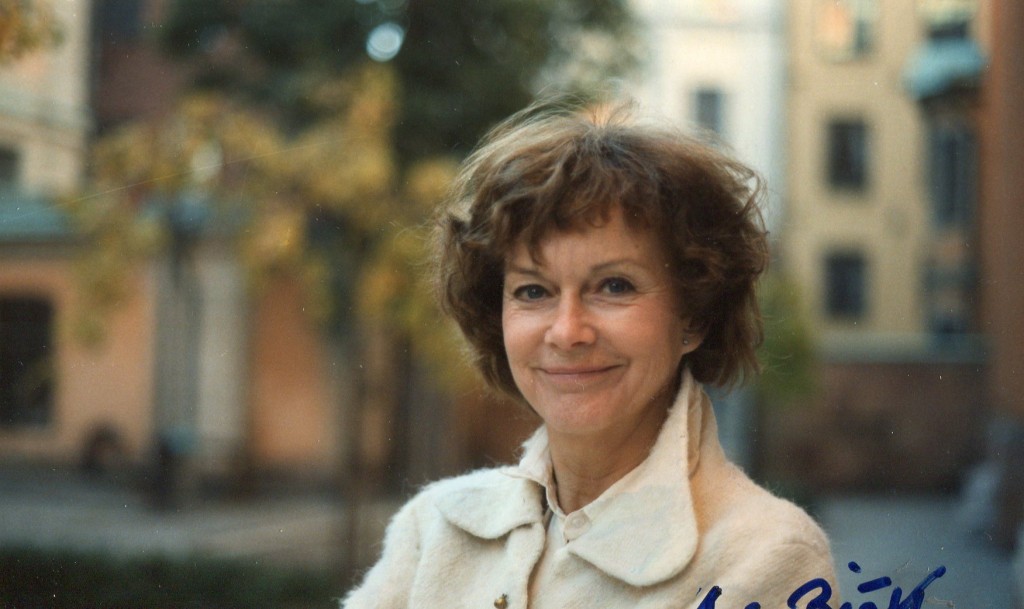
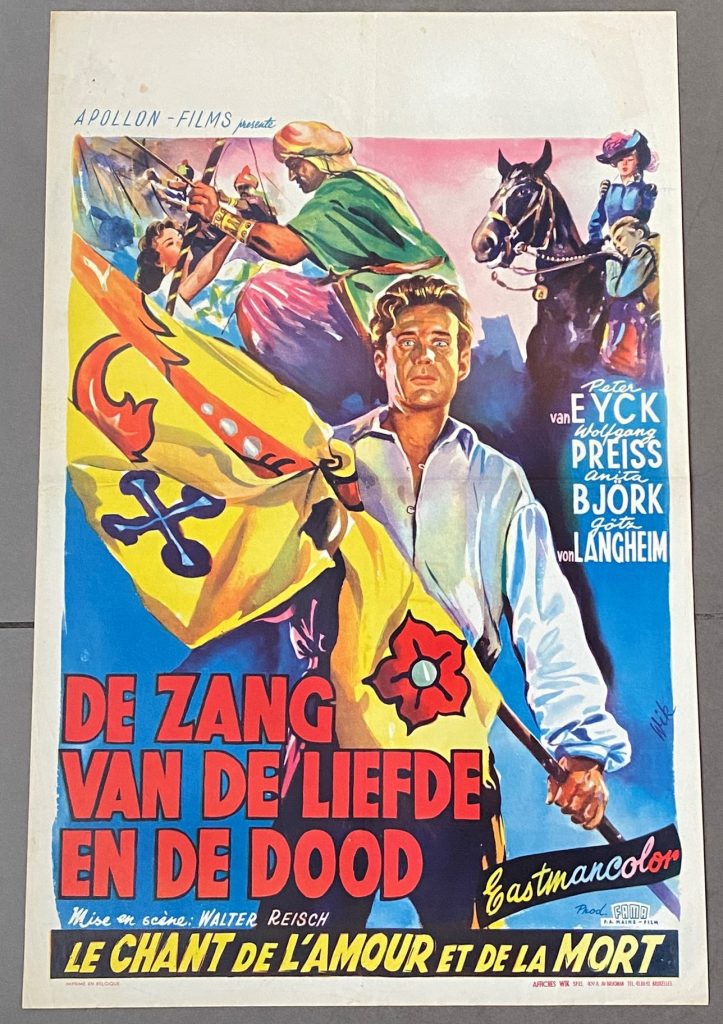
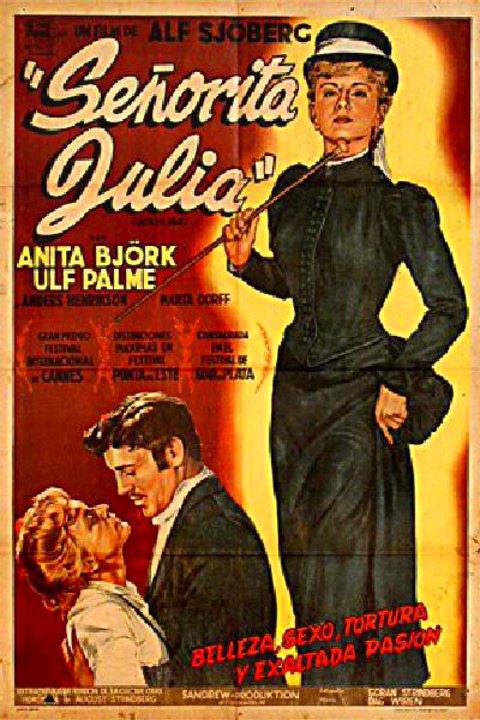
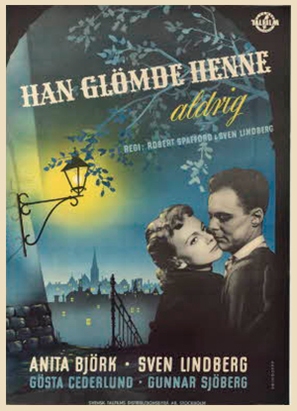
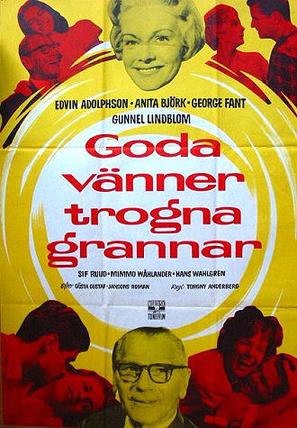
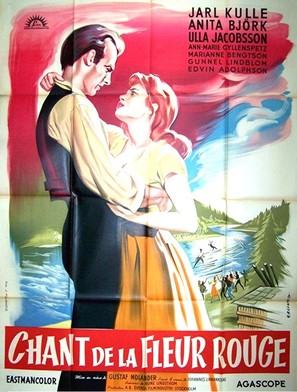
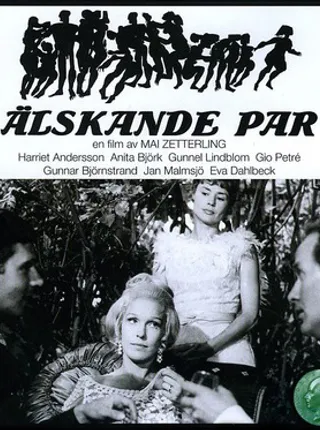
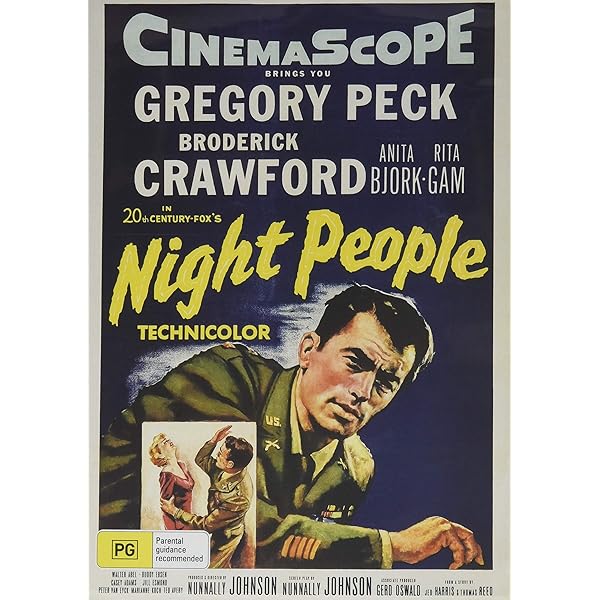
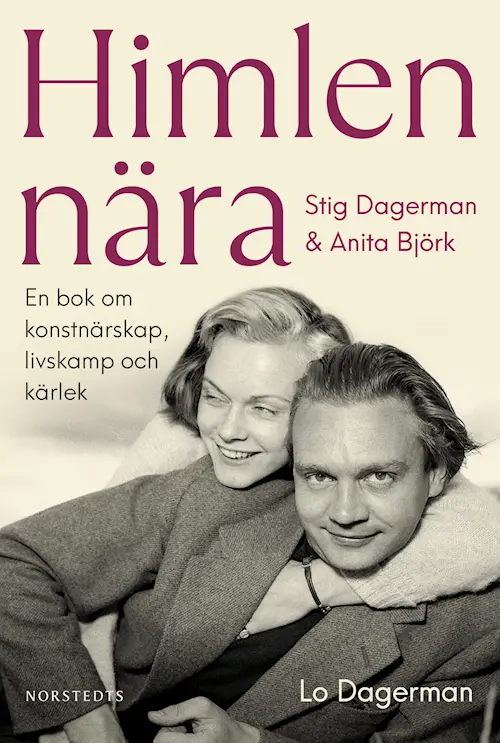
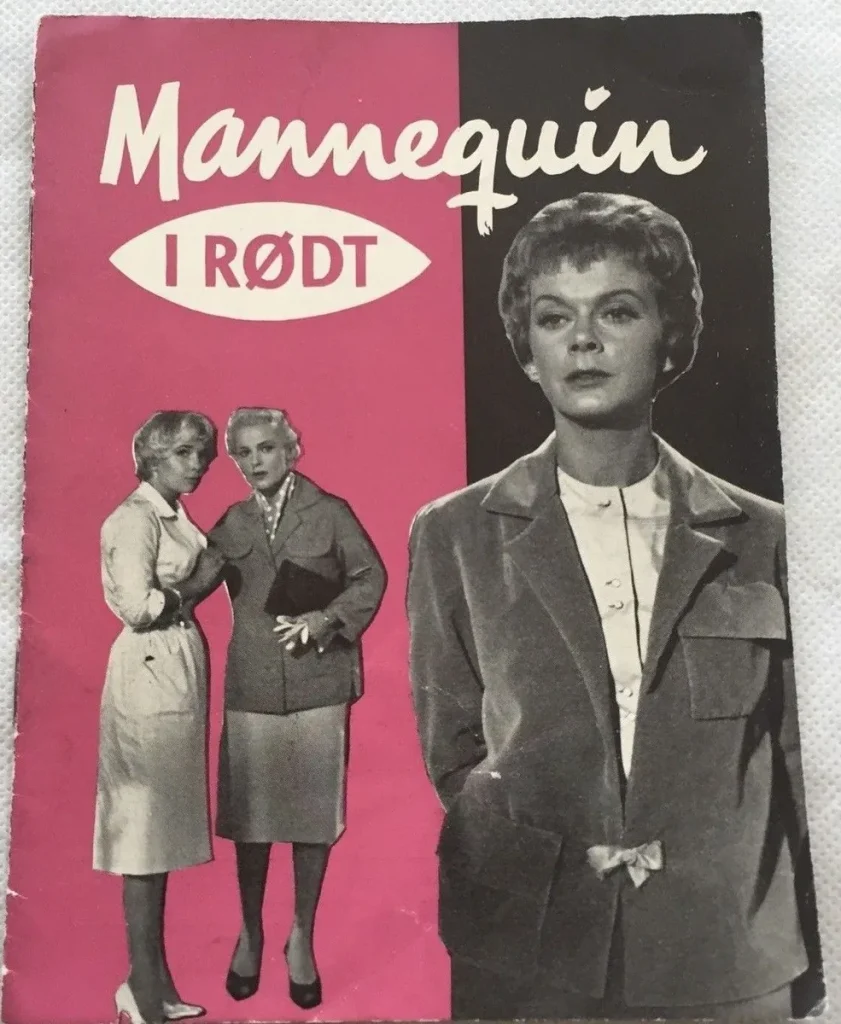
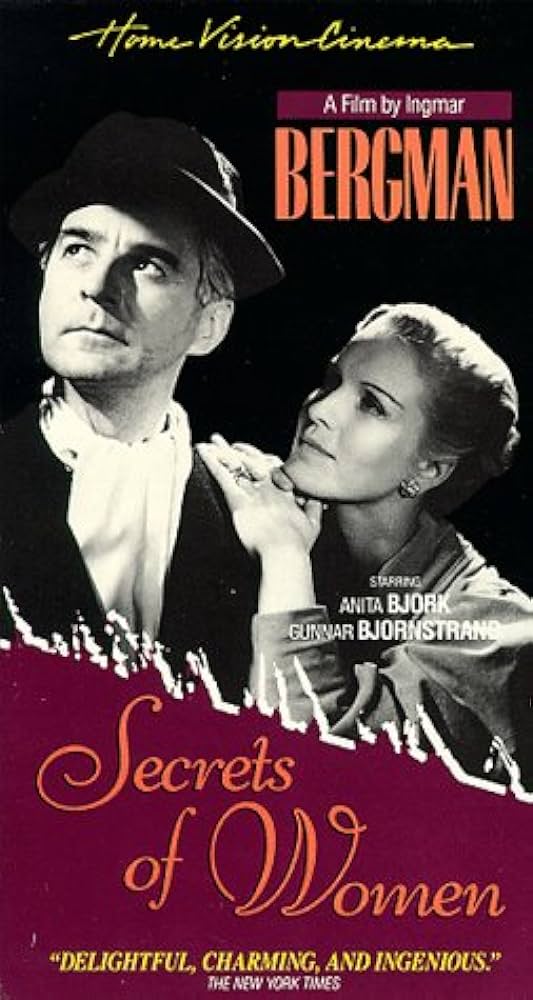
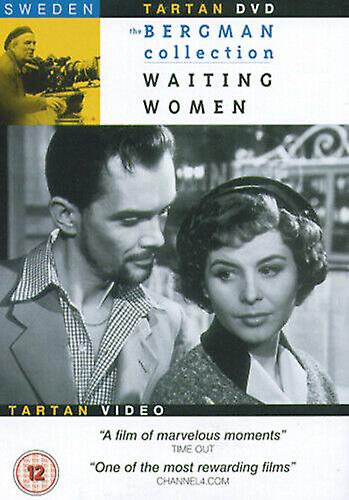
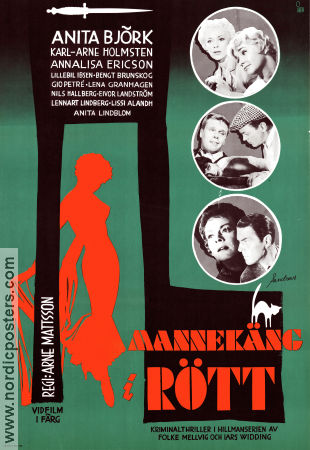
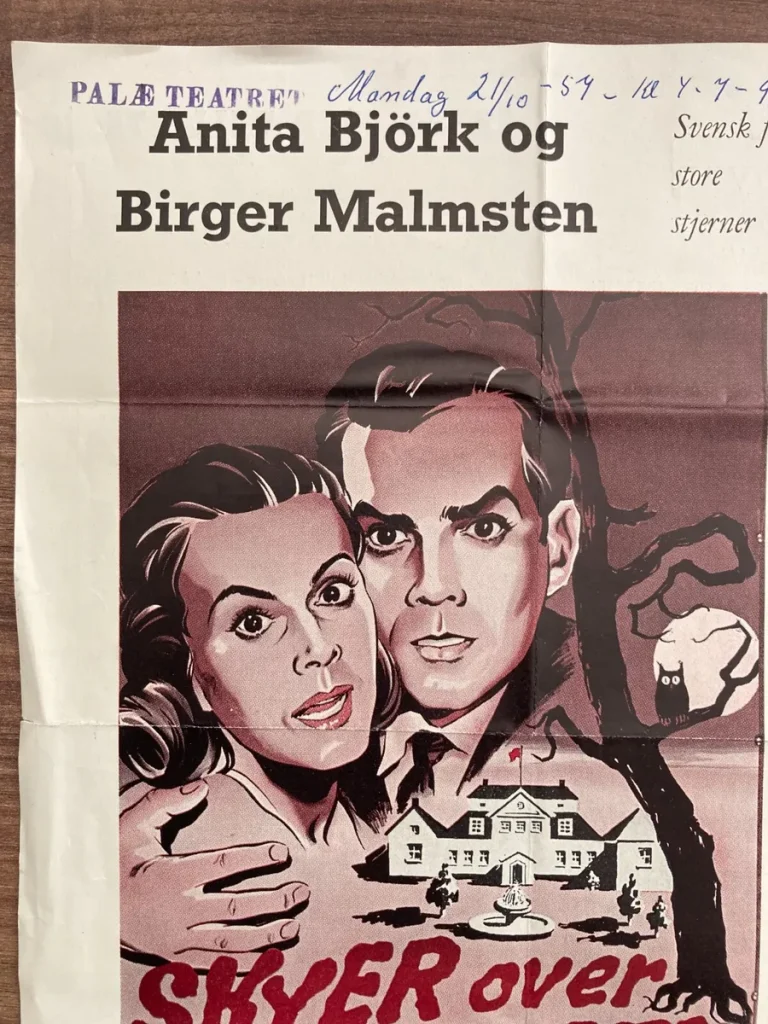
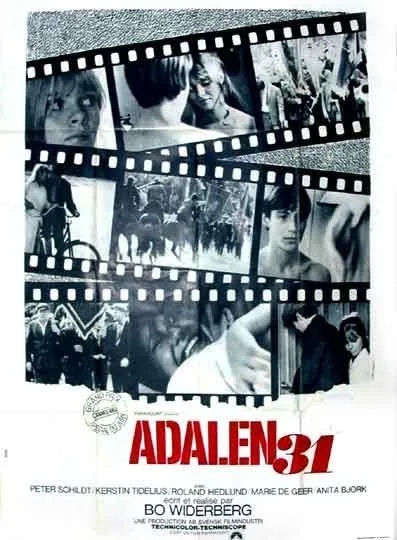
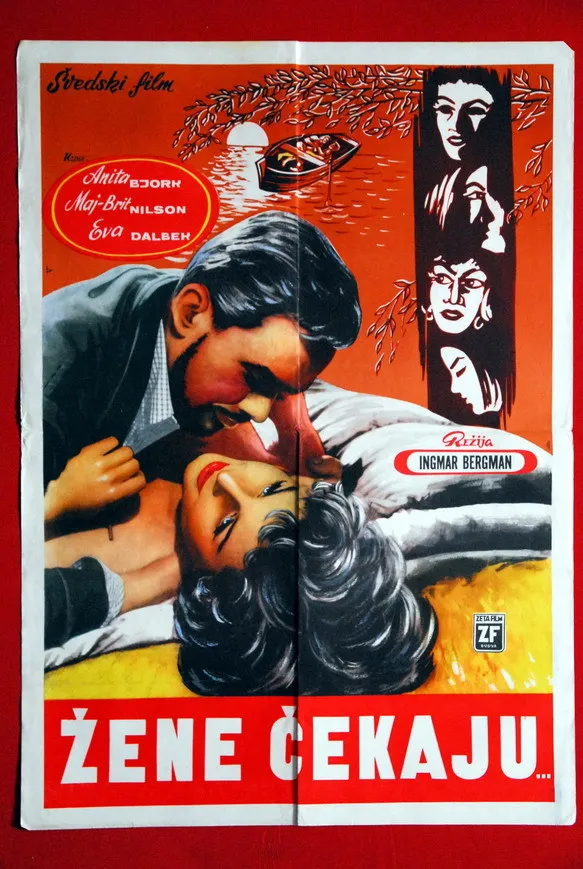
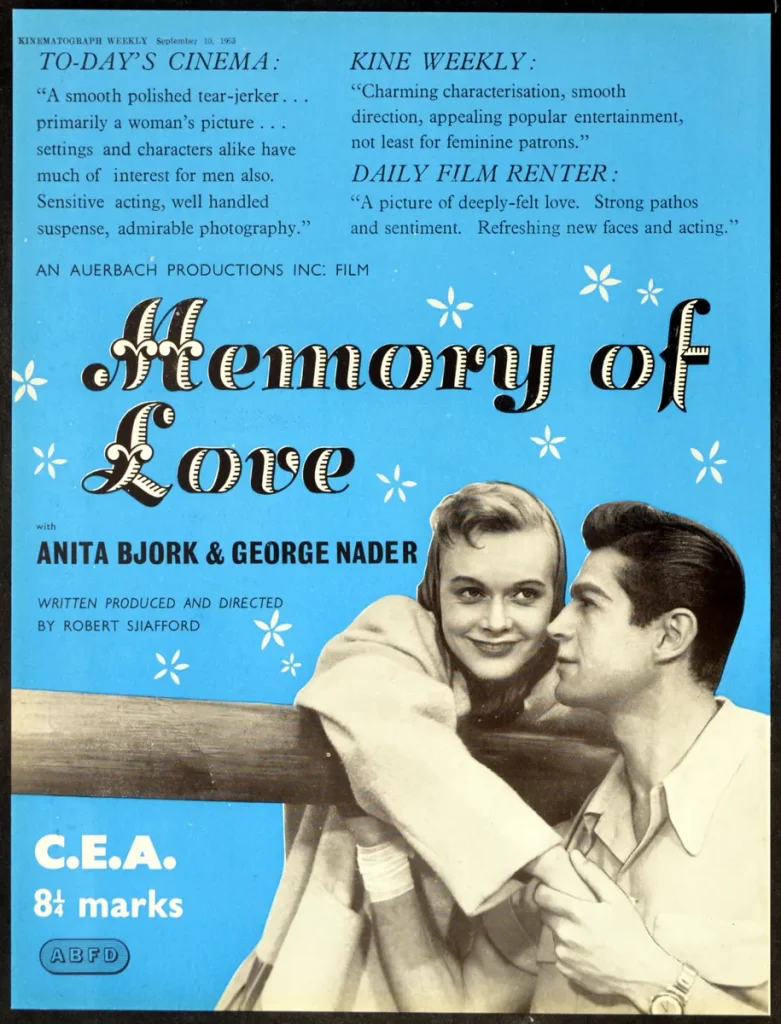
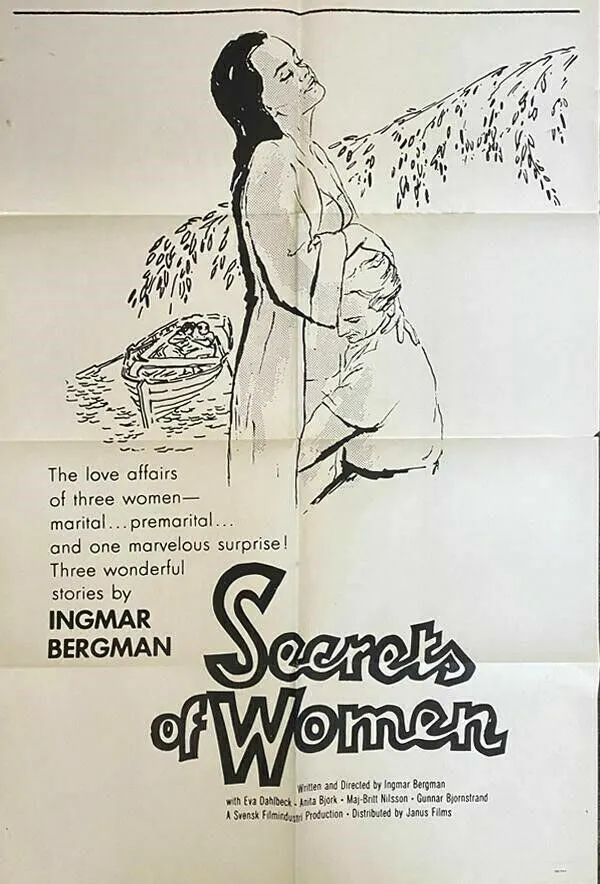
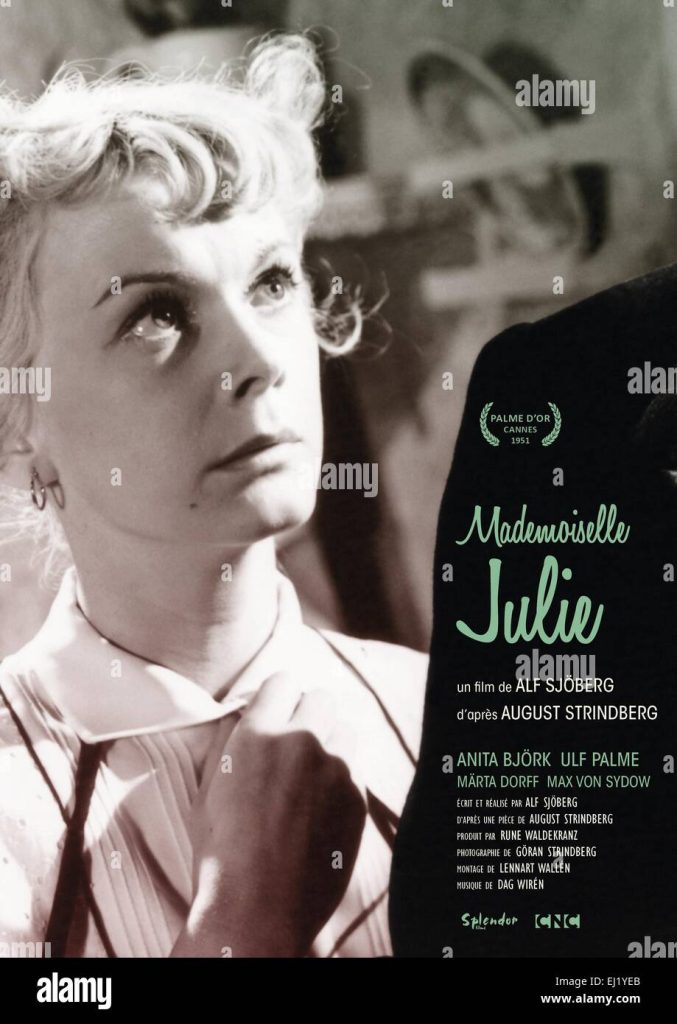
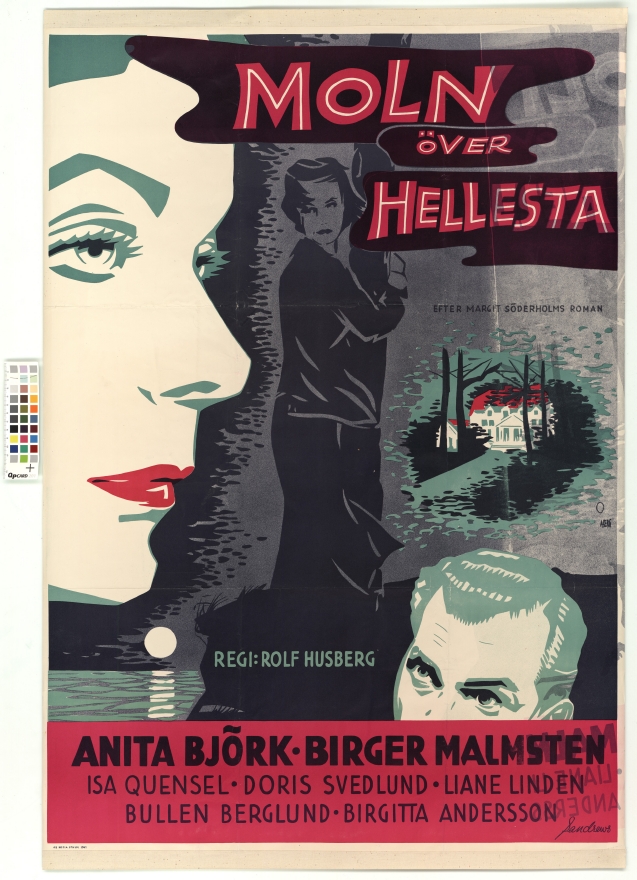
Anita Bjork was born in 1923 in Talberg, Sweden. She has been a leading light on Sedish theatre for many years. In 2009 she was on stage in “Love Letters”. On film she has appeared in “Det kom en gast” in 1947 and in 1951 “Miss Julie”. In 1954 she starred with Gregory Peck in “Night People”. She died in 2012.
Her “Telegraph” obituary:
She is best remembered for her role as Miss Julie in Alf Sjöberg’s 1951 screen adaptation of Strindberg’s classic play, which won the top prize at that year’s Cannes Film Festival . It was a superb performance by Anita Björk, combining youthful beauty and charm with undertones of ambition and determination, and many predicted that she had a brilliant international future.
On the strength of that role, Alfred Hitchcock wanted to use her in his 1953 film I Confess alongside Montgomery Clift’s Roman Catholic priest who, charged with murder, is unable to prove his innocence because the killer has come clean only in Confession.
But when Anita Björk reported for duty on the set in Hollywood accompanied by her lover, the writer Stig Dagerman, and their daughter, Warner Bros took fright at employing a star with an illegitimate child and sent her packing; the role went to Anne Baxter instead.
A second attempt to launch Anita Björk in Hollywood also misfired when the Cold War thriller Night People (1954), written and directed by Nunnally Johnson and starring Gregory Peck, failed at the box office.
Anita Björk’s career in Sweden, however, prospered. She had first been seen on screen in The Road to Heaven (1942), directed by Sjöberg, and she worked with Ingmar Bergman on one of his relatively early pictures, Secrets of Women (1952). An amusing story told by three married women about their flirtatious pasts , it was made shortly after Miss Julie and revealed in Anita Björk a comic screen presence to which she never really returned.
In later years she appeared for Mai Zetterling in Loving Couples (1964) and for Bo Widerberg in Adalen 31 (1969), about a strike in a paper factory in 1931 which has fatal consequences. But although she continued to appear on the big screen and on television until the turn of the millennium, she became most notable for her work on the Swedish stage.
Anita Björk was born at Tällberg, Sweden, on April 25 1923 and trained at the Royal Dramatic Theatre’s acting school (the Swedish equivalent of Rada) before embarking on what would become a long and distinguished career on the stage. In 1948 she appeared in Genet’s The Maids, going on play Agnes in Ibsen’s Brand, Juliette in Romeo & Juliet, and Eliza in Pygmalion.
She met Graham Greene — almost 20 years her senior — in 1954, when he was visiting his Swedish publisher and while he was still involved with the most famous of his mistresses, Catherine Walston, wife of the landowner and Labour MP Harry Walston.
Anita Björk had married Stig Dagerman in 1953, but within a year he had committed suicide. According to Michael Shelden, one of Greene’s biographers, the novelist developed “an irresistible attraction” to Anita, buying her a house near Stockholm and taking her on trips abroad, including to his villa on Capri.
Shelden writes: “It became a chore for him to fly back and forth to Stockholm, and he complained about the long dark winters and the difficulty of learning to speak Swedish. He did give some thought to living with [Anita] year-round, but he had no friends in Sweden besides Anita and his publisher… ‘He wanted me to move to France and live there,’ Anita wrote. ‘I couldn’t leave my children and the theatre.’”
The relationship lasted until 1959, and in that year Greene wrote a play called The Complaisant Lover, in which he appeared to draw on details of Dagerman’s suicide, a lapse of taste which offended some in the Swedish literary community. Anita herself did not protest, but it was later claimed that Greene’s failure to win the Nobel Prize for Literature was attributable to this incident. In fact, it seems probable that the Academy regarded him as more of “an entertainer” than a serious writer.
With her first husband, the actor and director Olof Bergström, to whom she was married from 1945 to 1951, Anita Björk had a son, the actor Jonas Bergström.
The above “Telegraph” obituary can also be accessed online here.
Her IMDB entry:
Anita Björk is able to use simple means to give depth and character to a role. She has a way of expressing any emotion just by raising an eyebrow or twitching her lips. This was something she used to a large extent in her best movie, Alf Sjöberg‘s Miss Julie (1951) where she played the young lady at a country manor, planning to elope with Jean the butler.
She was bitten by the acting bug in her teens and went to Stockholm. She started her acting studies at the Royal Dramatic Theater in 1942 and quickly got major roles. Her breakthrough came 1948 in Jean Genet‘s ‘The Maids’, followed by such roles as Agnes in ‘Henrik Ibsen’s ‘Brand’, Julie in William Shakespeare‘s ‘Romeo & Juliet’, Eliza in George Bernard Shaw‘s ‘Pygmalion’ and Tintomara in ‘Carl Jonas Love Almqvist”s ‘Drottningens juvelsmycke’.
She met and fell in love with the writer Stig Dagerman and in 1951 she gave birth to a daughter. The three of them went to Hollywood for Anita to negotiate a role in Alfred Hitchcock’s I Confess (1953). But when word came out that Anita wasn’t married to Stig, Hollywood lost interest. His divorce from his ex-wife wasn’t final until 1953 and apparently it wasn’t acceptable to Hollywood for a contract player to live with someone married to somebody else.
In West Germany she played against Gregory Peck in Night People (1954) but when the movie failed at the box office, so did her career abroad. Also, her husband killed himself and Anita decided to stick to the Royal Dramatic Theater where she has appeared in more than 80 roles through the years. In movies, she has appeared mainly in supporting roles.
Of her movies, the most interesting are Miss Julie (1951), On These Shoulders (1948) and Mannequin in Red (1958).
– IMDb Mini Biography By: Mattias Thuresson <mattias.thuresson@mbox
Her IMDB entry can also be accessed online here.

